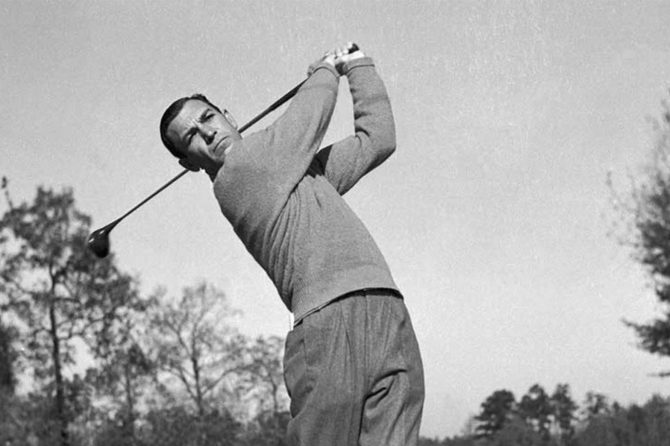The intersection of golf and cinema offers a rich tableau for examining cultural narratives and societal values. Golf, often seen as a gentleman’s sport, has transcended its traditional boundaries to become a notable motif in film, reflecting broader cultural themes such as ambition, resilience, and humor. Iconic films like “Caddyshack” and “Tin Cup” exemplify how the sport serves not only as a backdrop for personal stories but also as a catalyst for examining human behavior and societal norms. Through a nuanced analysis of these cinematic depictions, this exploration seeks to illuminate the ways in wich golf influences popular culture, shapes public perceptions, and engages audiences across diverse demographics. By understanding the cultural significance of golf in cinema, we can better appreciate the sport’s role in reflecting and shaping the multifaceted human experience.
Exploring the Historical Context of Golf in Film
The intersection of golf and cinema can be traced back to the early 20th century, showcasing the sport’s evolving significance within popular culture. W.C. Fields’ comedic portrayal in *The Golf Specialist* (1930) marked one of the first instances where golf took center stage in film, highlighting its status as a leisure activity among the American elite. This early portrayal set a precedent for golf’s integration into cinematic narratives, often characterized by **humor, class tension**, and **social commentary**. As the decades passed,golf films began to reflect broader societal values,including themes of personal redemption and the American Dream.
In the 1980s and 1990s, films such as *Caddyshack* (1980) and *Tin Cup* (1996) further solidified golf’s place in Hollywood. These movies utilized **comedy** and **romantic subplots** to attract wider audiences,depicting golf not merely as a sport but as a backdrop for personal struggles and triumphs. Caddyshack, in particular, was instrumental in dismantling class barriers within the sport, showcasing the clash between the affluent and the underdog. This era illustrated how cinema could democratize golf, making it more relatable and accessible to the general public while reflecting changing social dynamics.
As we moved into the 21st century, the portrayal of golf in film has continued to evolve, intertwining with global narratives and diverse cultural perspectives.Contemporary films often examine the **intersectionality of race, gender**, and **socio-economic status** within the sport. By featuring players from varied backgrounds and highlighting international tournaments, recent golf films have embraced a more inclusive vision of golf, promoting a deeper **cultural exchange**.The cultural significance of golf in film transcends entertainment, prompting audiences to engage with the sport’s history and its ongoing impact on societal norms.
Character Development and Golf: A reflection of Personal and Societal Values
Golf functions as a microcosm of life in cinema, epitomizing the journey of self-discovery and moral introspection. Characters grappling with personal dilemmas frequently enough find parallel resolutions on the golf course. **For instance, films like *The Legend of Bagger vance* showcase protagonists facing profound internal struggles**, where the game serves as a metaphor for overcoming life’s challenges. this interplay reveals how golf is imbued with values such as integrity, patience, and perseverance, which reflect broader societal expectations of character development.
Moreover, the depiction of character arcs in golf-focused movies often aligns with significant cultural narratives. Characters are not merely athletes; they are embodiments of societal ideals and aspirations. **In films like *Happy Gilmore* and *Caddyshack*, humor is intertwined with lessons about humility and self-acceptance**. These narratives resonate with audiences by challenging traditional norms and offering alternative views on what success looks like in both golf and life. The comedic framing combined with character growth initiates a dialog about societal pressures and the importance of authenticity.
To elucidate these themes further, consider the following table summarizing key character traits and their societal reflections across selected golf films:
| film | Character | Trait | Societal Reflection |
|---|---|---|---|
| *The Legend of Bagger Vance* | Rannulph Junuh | Redemption | Struggle against adversity |
| *Caddyshack* | Al Czervik | Nonconformity | Critique of elitism |
| *Bobby Jones: Stroke of Genius* | Bobby Jones | Integrity | Honor in competition |
Through these narratives and character developments, golf in cinema emerges as a lens through which personal and societal values are examined and critiqued. The sport transcends mere entertainment,offering viewers profound insights into the complexities of human experience and the continual evolution of societal standards.
Golf as a Metaphor for Class and Status in Cinematic Narratives
The portrayal of golf in films often serves as a **nuanced reflection** of class and status, revealing the sociocultural dynamics at play within various narratives. Golf, traditionally associated with the elite, is depicted in many cinematic contexts as a **battleground** for interclass competition and social stratification. as an example, movies like The Legend of Bagger Vance juxtapose the world of high-stakes golf against the backdrop of personal redemption, illustrating how one’s standing can shift dramatically through skill, mentorship, or sheer determination. In this way, golf becomes a vehicle for exploring the **moral and ethical dilemmas** faced by characters, especially in the context of societal expectations and personal ambitions.
Moreover, the aesthetics of golf courses in film frequently enough highlight societal divides.The immaculate greens and exclusive clubs symbolize not just leisure and privilege but also the barriers that define access to these spaces. Films frequently leverage the **visual metaphors** of open yet elitist landscapes to underline differences in ambition and opportunity. Cinematic representations may include class conflict through tournaments, where characters confront their status and grapple with the emotional weight of their societal roles. The dramatic encounters that unfold on the golf course serve to externalize the internal struggles of individuals confronting their place in a stratified society.
| Film | Main Theme | Class Depiction |
|---|---|---|
| Happy Gilmore | Identity and Persistence | Working-class hero vs. elite golfer |
| The Caddy | Friendship and Loyalty | Caddy’s social mobility |
| Caddyshack | Class Struggle | Conflict between rich and poor |
The duality of highlights the **tension** inherent in these interactions. Characters navigate a terrain laden with **expectations** and biases, revealing how deeply entrenched social norms continue to influence individual trajectories within society. by examining these themes, audiences not only glean insights into the characters’ journeys but also engage with broader questions of inequity, privilege, and aspiration that resonate beyond the screen, showcasing the enduring impact of golf in the realm of cinema.
Audience Reception and Interpretation: The Emotional Resonance of Golf Films
Golf films are more than mere entertainment; they serve as a lens through which audiences experience complex emotions. The portrayal of golf in cinema often resonates deeply due to its inherent themes of perseverance, personal growth, and the intricacies of human relationships. Films like “The legend of Bagger Vance” and “Caddyshack” illustrate divergent interpretations of the game, ranging from the serious exploration of inner conflicts to comedic takes on sportsmanship and camaraderie. Audiences often find a reflection of their own struggles and triumphs within these narratives, creating a bond that enhances their reception of the film.
Moreover, golf serves as a metaphor that transcends the sport itself, encapsulating broader life lessons. Viewers frequently associate the game with concepts such as **dedication**, **discipline**, and **strategic thinking**. These underlying messages resonate particularly within cultural contexts where such traits are valued. In films such as “The Greatest Game Ever Played”, audiences witness not only a historical recounting but also a heroic narrative, inspiring viewers to achieve greatness against the odds. This emotional connection is often amplified through evocative cinematography, which captures the serene beauty of golf courses and the palpable tension of crucial game moments.
Audience interpretation of these films is also influenced by the socio-cultural surroundings. As an example,as discussed in Golf Monthly, different demographics may relate to the struggles depicted in these films in unique ways, shaped by their personal experiences and societal expectations. A brief overview of common interpretations includes:
| Audience Group | Common Interpretation |
|---|---|
| Amateur Golfers | Identifying with narratives of growth and skill development |
| Young Viewers | Viewing golf as a metaphor for personal ambition and success |
| Older Audiences | Reflecting on legacy and the passage of time |
Through these interpretations, golf films cultivate a rich tapestry of emotional experiences, ultimately contributing to their cultural significance. Such engagement not only enhances viewing pleasure but also fosters a community of fans who can relate not just to the sport, but to the deeper human emotions entwined within these cinematic narratives.
Future Directions for Golf in Cinema: trends and Recommendations for Filmmakers
The future of golf in cinema presents a plethora of opportunities for filmmakers to explore new narratives that resonate with contemporary audiences. The evolution of golf-related films can be enriched by integrating diverse **cultural perspectives** and **experiences**. Filmmakers are encouraged to consider the following trends when developing future projects:
- Incorporating stories from underrepresented communities within the sport,similar to the theme explored in the upcoming film about Mexican American high schoolers.
- Utilizing humor and relatable characters to engage a wider audience, as evidenced by the success of films like **Happy Gilmore**.
- Exploring the intersection of technology and golf, emphasizing innovations that transform the experience of both players and spectators.
Moreover, the portrayal of golf can serve as a societal microcosm, reflecting broader themes prevalent in today’s socio-political climate. It is indeed imperative for filmmakers to delve into subjects that resonate with audiences on multiple levels. Considerations can include:
- The commentary on **class** and **privilege** often associated with golf.
- Examining the personal struggles of individuals both in and out of the sport, highlighting emotional and psychological journeys.
- Investigating the **environmental impacts** associated with golf, aligning narratives with contemporary **sustainability** movements.
To facilitate innovative storytelling,filmmakers might explore collaborative projects across various genres that redefine the expectations of golf-related cinema. Possible approaches include:
| Genre | Potential Golf Themes |
|---|---|
| Emphasizing creativity and inclusivity in storytelling. | |
| Drama | Personal struggles and triumphs through the sport. |
| Comedy | Humorous takes on golf traditions and stereotypes. |
| documentary | Real-life stories that inspire and challenge perceptions. |
the examination of golf’s cultural impact within cinema reveals a multifaceted relationship that mirrors societal values, norms, and aspirations. Key films such as “caddyshack,” ”Tin Cup,” and “Happy Gilmore” not only entertain but also provoke thought about the complexities of human nature, competition, and resilience. These narratives often transcend their immediate comedic or dramatic elements, serving as reflections of broader cultural phenomena, including leisure, status, and personal growth. As golf continues to permeate various aspects of popular culture, its representation in film offers a rich terrain for understanding the evolving dynamics of both the sport and the society it inhabits. Future research may further illuminate how these cinematic portrayals influence audience perceptions and encourage engagement with the sport itself, fostering a deeper recognition for golf’s role in shaping contemporary cultural discourse.





